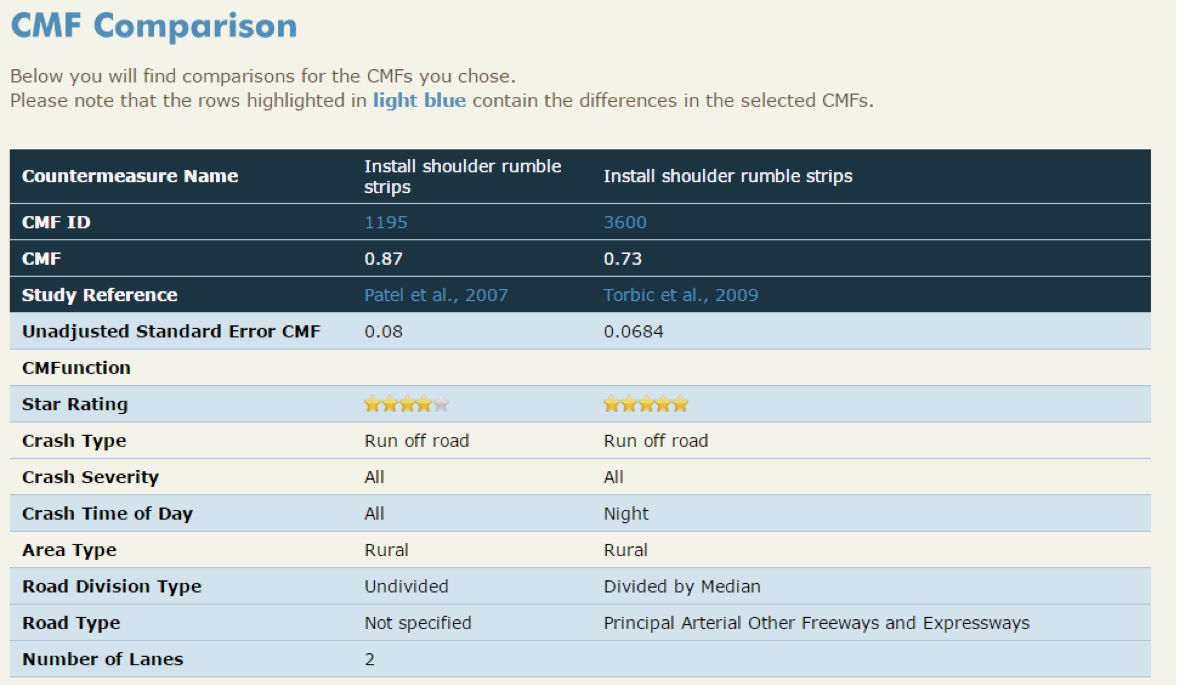The summer 2016 edition of CMF Update is the 13th edition of the Crash Modification Factors Clearinghouse e-newsletter. To subscribe, please visit http://www.cmfclearinghouse.org/newsletter_signup.cfm.
To view archived issues, please visit http://www.cmfclearinghouse.org/newsletter.cfm.
Register Today for an August TRB Webinar!
Guidance on Developing Crash Modification Factors
Thursday, August 11
2:00-3:30 Eastern
Join transportation engineers, researchers, designers, and planners from across the country to learn more about the basic study types used to develop Crash Modification Factors (CMFs). Presenters will discuss the different study types and potential biases, the importance of CMF documentation, and State department of transportation considerations. Presenters include:
Frank Gross, VHB
Daniel Carter, UNC Highway Safety Research Center
Randall Laninga, Illinois Department of Transportation
Kerrie Schattler, Bradley University
Moderated by: Karen Dixon, Texas A&M Transportation Institute
At the end of this webinar, participants will be able to:
Describe the two basic study methodologies for developing CMFs
Identify potential biases in CMF development
Understand how to document CMF development
Continuing education: A certificate for 1.5 Professional Development Hours (PDHs) will be provided to Professional Engineers (PEs) who register and attend the webinar as an individual.
Featured CMFs
The CMF Clearinghouse is continually updated with new CMFs. Below are CMFs recently added to the Clearinghouse database.
Install automated section speed enforcement system
Crash Modification Factor (CMF) Value: 0.68
Star Quality Rating: ![]()
Install left turn flashing yellow arrow signals and supplemental traffic signs
Crash Modification Factor (CMF) Value: 0.857
Star Quality Rating: ![]()
Increase from 4 lanes to 6 lanes
Crash Modification Factor (CMF) Value: 0.85
Star Quality Rating: ![]()
Widen Shoulder
Crash Modification Factor (CMF) Value: 0.82
Star Quality Rating: ![]()
Interested in comparing CMFs side by side? Try the new CMF Comparison Tool
The CMF Clearinghouse team has developed a new way for users to compare CMFs in a side-by-side fashion.
The Comparison Tool on the CMF clearinghouse website now assists users in selecting a CMF that fits their needs and site of interest.

To use the tool, users begin by searching for a CMF topic and then select between two and six CMFs from their search results. After the user clicks “Compare”, a comparison page will show detailed information related to each CMF such as roadway type, number of lanes, AADT range, intersection geometry and more.

The tool highlights the fields of data where the CMFs are different. For example, if one CMF was developed for an undivided road and another was developed for a road divided by a median, the “Road Division Type” row is highlighted.
Try it out! Visit cmfclearinghouse.org to begin your search.
Featured Resources: Summary of State SPF Calibration and Development Effort and Summary of State-Adapted HSM Part C Spreadsheet Tools
Summary of State SPF Calibration and Development Efforts
Safety performance functions (SPFs) are one of the fundamental building blocks of the predictive methods in the HSM. One step in implementing the HSM is calibration of the HSM-provided SPFs or development of jurisdiction-specific SPFs. Many States have already completed this step. This spreadsheet (compiled in June 2016) summarizes the results from States that have published and posted their SPF calibration factors and/or State-developed SPFs.
Summary of State-Adapted HSM Part C Spreadsheet Tools
Part C of the HSM provides predictive methods for estimating predicted and expected crash frequency and severity for several roadway types. Among the HSM training tools developed under NCHRP Project 17-38 was a set of Microsoft Excel spreadsheets for performing the HSM Part C calculations for two-lane two-way rural roads, multilane rural roads, urban and suburban arterials. NCHRP Project 17-45 developed ISATe, an Excel-based spreadsheet tool for freeways and ramps. Several States have adapted these spreadsheets for production purposes and to reflect their regional crash data. This table provides a summary of State-adapted HSM Part C spreadsheet tools.
For more information, visit the “Additional Resources” link on the Clearinghouse homepage.
